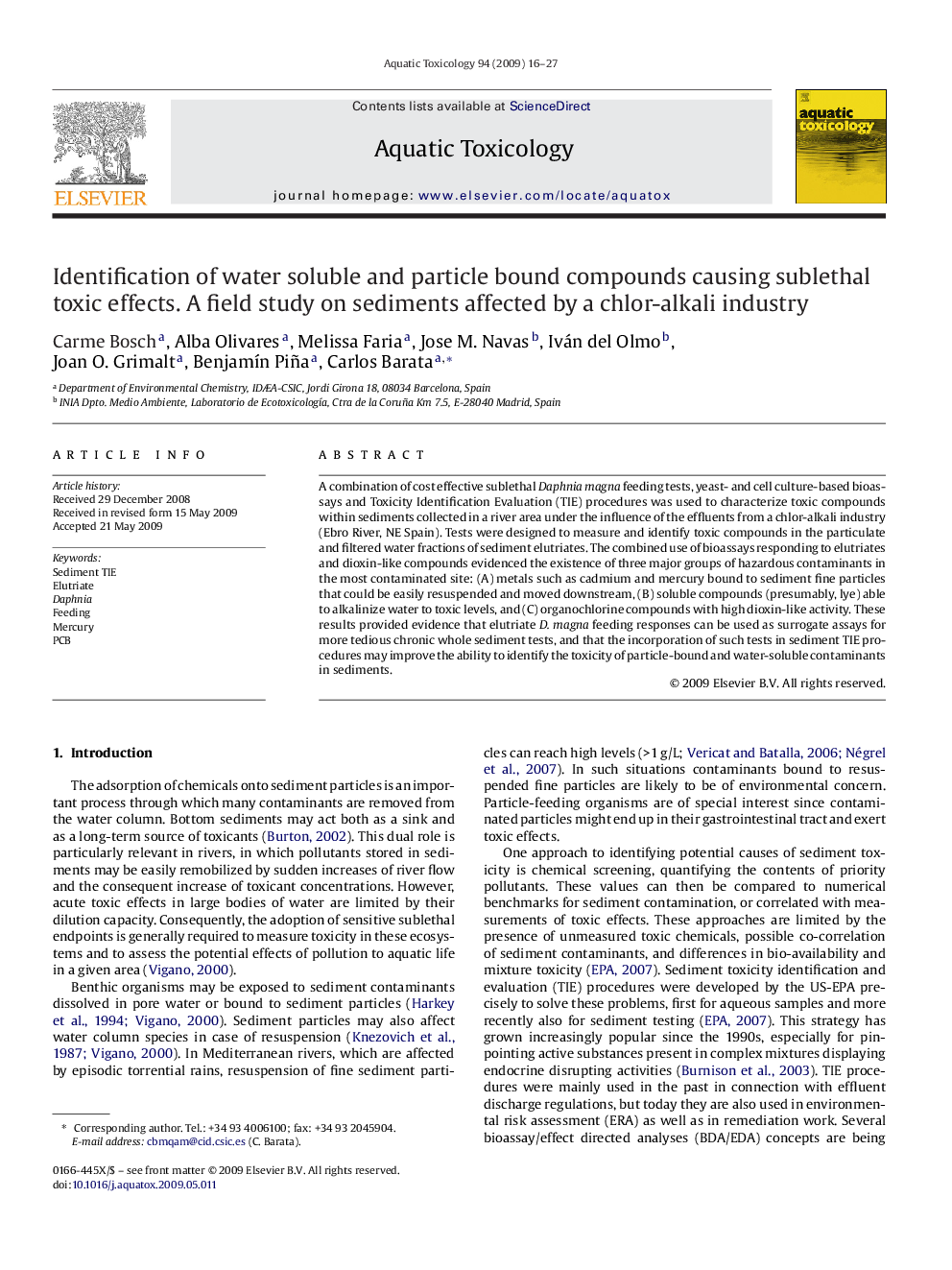| Article ID | Journal | Published Year | Pages | File Type |
|---|---|---|---|---|
| 4530642 | Aquatic Toxicology | 2009 | 12 Pages |
A combination of cost effective sublethal Daphnia magna feeding tests, yeast- and cell culture-based bioassays and Toxicity Identification Evaluation (TIE) procedures was used to characterize toxic compounds within sediments collected in a river area under the influence of the effluents from a chlor-alkali industry (Ebro River, NE Spain). Tests were designed to measure and identify toxic compounds in the particulate and filtered water fractions of sediment elutriates. The combined use of bioassays responding to elutriates and dioxin-like compounds evidenced the existence of three major groups of hazardous contaminants in the most contaminated site: (A) metals such as cadmium and mercury bound to sediment fine particles that could be easily resuspended and moved downstream, (B) soluble compounds (presumably, lye) able to alkalinize water to toxic levels, and (C) organochlorine compounds with high dioxin-like activity. These results provided evidence that elutriate D. magna feeding responses can be used as surrogate assays for more tedious chronic whole sediment tests, and that the incorporation of such tests in sediment TIE procedures may improve the ability to identify the toxicity of particle-bound and water-soluble contaminants in sediments.
